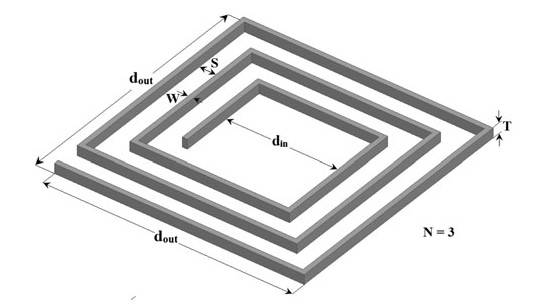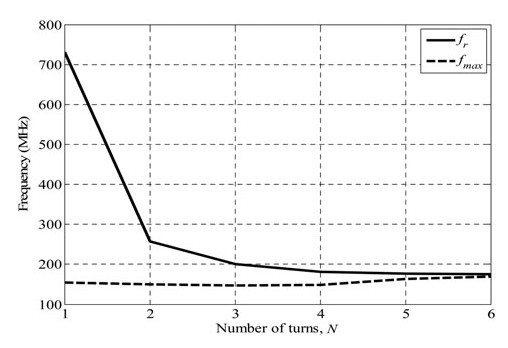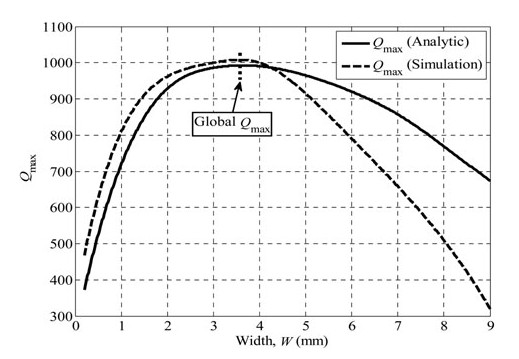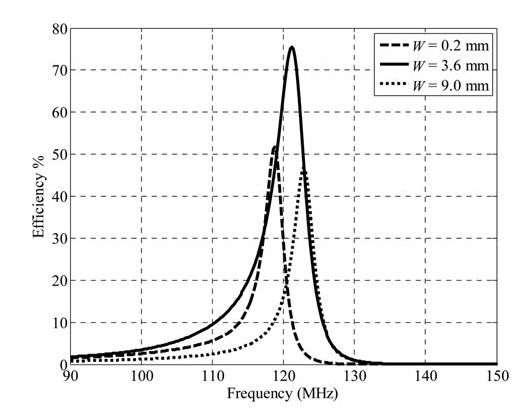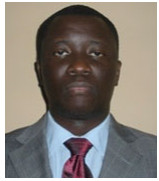 Olutola Jonah
Olutola Jonah received the B.Sc. and M.Sc. Degrees in electrical engineering from Obafemi Awolowo University, Ile-Ife, Nigeria, in 2000 and 2008, respectively. He also received his Ph. D. degree Electrical Engineering from Florida International University, Miami. His research interests include electromagnetic wave propagation in non-homogenous interfaces, antennas and RF circuits.
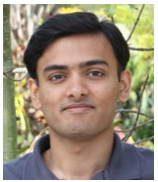 Arvind Merwaday
Arvind Merwaday is a doctoral student in Electrical Engineering at Florida International University, Miami, FL, USA. His research interest includes efficient wireless power transfer using SCMR method. He received B.E. degree from B.M.S. College of Engineering, Bengaluru, India, in 2008. He joined Cypress Semiconductors India Pvt. Limited, Bengaluru, after graduation for 3 years as Applications Engineer.
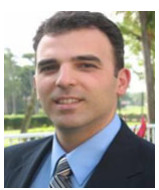 Stavros V. Georgakopoulos
Stavros V. Georgakopoulos received the Diploma in electrical engineering from the University of Patras, Patras, Greece, in June 1996, M.S. degree in electrical engineering, and the Ph. D. degree in electrical engineering both from Arizona State University (ASU), Tempe, in 1998, and 2001, respectively. From 2001-2007 he held a position as Principal Engineer at the Research and Development Department of SV Microwave, Inc., where he worked on the design of high reliability passive microwave components, thin-film circuits, high performance interconnects and calibration standards. Since 2007, he has been with the Department of Electrical and Computer Engineering, Florida International University, Miami, where he is now Assistant Professor. He is an Associate Editor of the IEEE Transactions on Antennas and Propagation. His current research interests relate to wireless powering of portable, wearable and implantable devices, applied electromagnetics, novel antennas, and wireless sensors.
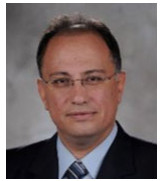 Manos M. Tentzeris
Manos M. Tentzeris received the Diploma degree in electrical and computer engineering (
magna cum laude) from the National Technical University of Athens, Athens, Greece, and the M.S. and Ph.D. degrees in electrical engineering and computer science from The University of Michigan at Ann Arbor.
He is currently a Professor with School of Electrical and Computer Engineering, Georgia Institute of Technology, Atlanta. He has helped develop academic programs in highly integrated/multilayer packaging for RF and wireless applications using ceramic and organic flexible materials, paper-based RFIDs and sensors, biosensors, wearable electronics, inkjet-printed electronics, "Green" electronics and power scavenging, nanotechnology applications in RF, microwave microelectromechanical systems (MEMs), system-on-package (SOP)-integrated (ultra-wideband (UWB), multiband, millimeter wave, conformal) antennas and adaptive numerical electromagnetic (FDTD, multiresolution algorithms). He heads the ATHENA research group (20 researchers). He is currently the head of the Electromagnetics Technical Interest Group, School of Electrical and Computer Engineering, Georgia Institute of Technology. From 2006 to 2010, he was the Georgia Electronic Design Center Associate Director for RFID/sensors research. From 2003 to 2006, he was the Georgia Institute of Technology National Science Foundation (NSF) Packaging Research Center Associate Director for RF Research and the RF Alliance Leader. During the summer of 2002, he was a Visiting Professor with the Technical University of Munich, Munich, Germany. During the summer of 2009, he was a Visiting Professor with GTRI-Ireland, Athlone, Ireland. In the summer of 2010, he was a Visiting Professor with LAAS-CNRS, Toulouse, France. He has authored or coauthored over 420 papers in refereed journals and conference proceedings, five books, and 19 book chapters. He is an Associate Editor for the
International Journal on Antennas and Propagation.
Dr. Tentzeris was the Technical Program Committee (TPC) chair for the 2008 IEEE Microwave Theory and Techniques Society (IEEE MTT-S) International Microwave Symposium (IMS) and the chair of the 2005 IEEE CEM-TD Workshop. He is the vice-chair of the RF Technical Committee (TC16), IEEE CPMT Society. He is the founder and chair of the RFID Technical Committee (TC24), IEEE MTT-S. He is the secretary/treasurer of the IEEE C-RFID. He is a member of URSI-Commission D and the MTT-15 committee. He is an Associate Member of the European Microwave Association (EuMA). He is a Fellow of the Electromagnetic Academy. He is a member of the Technical Chamber of Greece. He is an IEEEMTT-S DistinguishedMicrowave Lecturers (2010–2012). He was an associate editor for the IEEE TRANSACTIONS ON MICROWAVE THEORY AND TECHNIQUES. He is an associate editor for the IEEE TRANSACTIONS ON ADVANCED PACKAGING. He has given over 100 invited talks to various universities and companies all over the world. He was the recipient/corecipient of the 2012 FiDiPro Professorship in Finland, the 2010 IEEE Antennas and Propagation Society Piergiorgio L. E. Uslenghi Letters Prize Paper Award, the 2011 International Workshop on Structural Health Monitoring Best Student Paper Award, the 2010 Georgia Institute of Technology Senior Faculty Outstanding Undergraduate Research Mentor Award, the 2009 IEEE TRANSACTIONS ON COMPONENTS AND PACKAGING TECHNOLOGIES Best Paper Award, the 2009 E. T. S. Walton Award of the Irish Science Foundation, the 2007 IEEE Antennas and Propagation Society (AP-S) Symposium Best Student Paper Award, the 2007 IEEE MTT-S IMS Third Best Student Paper Award, the 2007 ISAP 2007 Poster Presentation Award, the 2006 IEEE MTT-S Outstanding Young Engineer Award, the 2006 Asian–Pacific Microwave Conference Award, the 2004 IEEE TRANSACTIONS ON ADVANCED PACKAGING Commendable Paper Award, the 2003 NASA Godfrey "Art" Anzic Collaborative Distinguished Publication Award, the 2003 IBC International Educator of the Year Award, the 2003 IEEE CPMT Outstanding Young Engineer Award, the 2002 International Conference on Microwave and Millimeter-Wave Technology Best Paper Award, the 2002 Georgia Institute of Technology–Electrical and Computer Engineering Outstanding Junior Faculty Award, the 2001 ACES Conference Best Paper Award, the 2000 National Science Foundation (NSF) CAREER Award, and the 1997 Best Paper Award of the International Hybrid Microelectronics and Packaging Society









 Olutola Jonah received the B.Sc. and M.Sc. Degrees in electrical engineering from Obafemi Awolowo University, Ile-Ife, Nigeria, in 2000 and 2008, respectively. He also received his Ph. D. degree Electrical Engineering from Florida International University, Miami. His research interests include electromagnetic wave propagation in non-homogenous interfaces, antennas and RF circuits.
Olutola Jonah received the B.Sc. and M.Sc. Degrees in electrical engineering from Obafemi Awolowo University, Ile-Ife, Nigeria, in 2000 and 2008, respectively. He also received his Ph. D. degree Electrical Engineering from Florida International University, Miami. His research interests include electromagnetic wave propagation in non-homogenous interfaces, antennas and RF circuits.  Arvind Merwaday is a doctoral student in Electrical Engineering at Florida International University, Miami, FL, USA. His research interest includes efficient wireless power transfer using SCMR method. He received B.E. degree from B.M.S. College of Engineering, Bengaluru, India, in 2008. He joined Cypress Semiconductors India Pvt. Limited, Bengaluru, after graduation for 3 years as Applications Engineer.
Arvind Merwaday is a doctoral student in Electrical Engineering at Florida International University, Miami, FL, USA. His research interest includes efficient wireless power transfer using SCMR method. He received B.E. degree from B.M.S. College of Engineering, Bengaluru, India, in 2008. He joined Cypress Semiconductors India Pvt. Limited, Bengaluru, after graduation for 3 years as Applications Engineer.  Stavros V. Georgakopoulos received the Diploma in electrical engineering from the University of Patras, Patras, Greece, in June 1996, M.S. degree in electrical engineering, and the Ph. D. degree in electrical engineering both from Arizona State University (ASU), Tempe, in 1998, and 2001, respectively. From 2001-2007 he held a position as Principal Engineer at the Research and Development Department of SV Microwave, Inc., where he worked on the design of high reliability passive microwave components, thin-film circuits, high performance interconnects and calibration standards. Since 2007, he has been with the Department of Electrical and Computer Engineering, Florida International University, Miami, where he is now Assistant Professor. He is an Associate Editor of the IEEE Transactions on Antennas and Propagation. His current research interests relate to wireless powering of portable, wearable and implantable devices, applied electromagnetics, novel antennas, and wireless sensors.
Stavros V. Georgakopoulos received the Diploma in electrical engineering from the University of Patras, Patras, Greece, in June 1996, M.S. degree in electrical engineering, and the Ph. D. degree in electrical engineering both from Arizona State University (ASU), Tempe, in 1998, and 2001, respectively. From 2001-2007 he held a position as Principal Engineer at the Research and Development Department of SV Microwave, Inc., where he worked on the design of high reliability passive microwave components, thin-film circuits, high performance interconnects and calibration standards. Since 2007, he has been with the Department of Electrical and Computer Engineering, Florida International University, Miami, where he is now Assistant Professor. He is an Associate Editor of the IEEE Transactions on Antennas and Propagation. His current research interests relate to wireless powering of portable, wearable and implantable devices, applied electromagnetics, novel antennas, and wireless sensors.  Manos M. Tentzeris received the Diploma degree in electrical and computer engineering (magna cum laude) from the National Technical University of Athens, Athens, Greece, and the M.S. and Ph.D. degrees in electrical engineering and computer science from The University of Michigan at Ann Arbor.
Manos M. Tentzeris received the Diploma degree in electrical and computer engineering (magna cum laude) from the National Technical University of Athens, Athens, Greece, and the M.S. and Ph.D. degrees in electrical engineering and computer science from The University of Michigan at Ann Arbor. 




